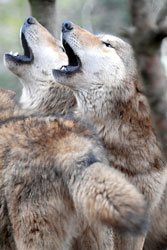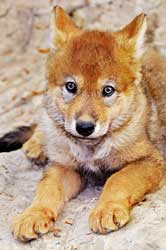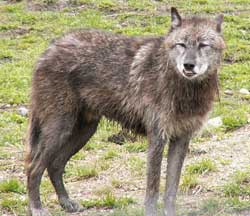Few creatures have intrigued man as much as the wolf, which is why this wolf facts list is compiled.
Have you ever heard a wolf howl? Few things are as unsettling while simultaneously intriguing. While most visitors never see a wolf, many hear wolves howl in Glacier National Park.
Unfortunately, many people don’t know much about wolves. This leads to an unreasonable fear of a mammal that poses zero threat to man. In fact, there have been no documented reports of a wolf killing a human.
Below you will find all the interesting facts about wolves that you could ever want to know. Hopefully it will make you more understanding of these amazing creatures and may even lead to you hearing a wolf howl at Glacier National Park.
Wolf Facts – Habitat
The reduction in wolf habitat has long been the greatest threat to North American grey wolves. As wolf habitat decreases due to human encroachment, their numbers are forced to dwindle.
Now, wolf habitat is restricted to Yellowstone National Park, Glacier National Park and parts of northern Minnesota. Since their reintroduction, wolves have dominated the food chain and proven formidable predators. However, they have not caused a significant decrease in prey population.
The main effect of a greater wolf habitat and increased gray wolf population is reduced prey for human hunters. In my opinion, this is a worthy sacrifice so that one of North America’s greatest species can thrive once again.
Another effect of an increase in wolf habitat is greater biodiversity. This is done by:
- Elk herds have been reduced
- This reduced elk damage to meadow and wetlands area
- With streambed vegetation thriving, additional habitat is restored for birds, beaver and fish
- This is aided due to coyote numbers decreasing, as they are hunted by wolves, too
- With a decrease in coyotes, populations of pronghorn and red fox have been allowed to rebound
Wolf Facts – Wolves Howling
Why do wolves howl? While artistic renditions have wolves howling at the moon, the truth is wolves never behave in such a manner.
In fact, not all wolves howl. It is not that they are unable to though – if a wolf is without a pack, they have no territory and therefor have no reason to howl.
The real wolf facts about why wolves howl are:
 |
|
A picture of wolves howling |
- Saying hello – Wolves howl to greet fellow pack members
- Communicate location – Howling is the most effective way for a member of the pack to call another to its location
- Mark territory – Howls give warning to other wolves about a pack’s territory boundaries
- Call together – If a kill has been made, the best way to bring the pack together is to howl
Wolf Facts – Wolf Puppies
Wolf pups are adorable. There is no denying that. However, they are extremely vulnerable to predators.
 |
|
A cute wolf pup picture |
Weighing in at a mere one pound, wolf pups are deaf and blind at birth.
With 4 to 6 cubs being born per litter, wolves have a lot of responsibility to defend their pups. Puppies are not allowed to leave the den until they are one month old and all pack members are responsible for rearing their pups.
Unfortunately, the mortality rate for wolf puppies is 50%. Still, this allows other predators and scavengers to thrive, while restricting wolf populations.
More Interesting Wolf Facts
Need more wolf facts and information? Okay, here it is:
- Lifespan – Wolves can live up to 13 years in the wild, but generally only survive for 8
- Color – North American gray wolves can have gray, brown, white, black or a combination of fur colors
- What do wolves eat – Wolf diet generally consists of deer, caribou, bison, elk, moose, beaver & musk-oxen. Learn more about what wolves eat.
- Weight – Wolves weigh between 50 and 180 pounds
- Height & Length – Wolves can be between 4.5 and 6.5 feet in length and 25 to 33 inches from paw to shoulder
- Gestation – The gestation period for wolves is 63 days
- Speed – When on the hunt, wolves can reach speeds up to 35 MPH
 |
|
A black, North American Gray Wolf picture |
More Montana Fish & Wildlife Information
Montana Fish & Wildlife – Return back to information on Montana Fish and Wildlife
Ready to return back to
Glacier National Park Travel Guide











Speak Your Mind